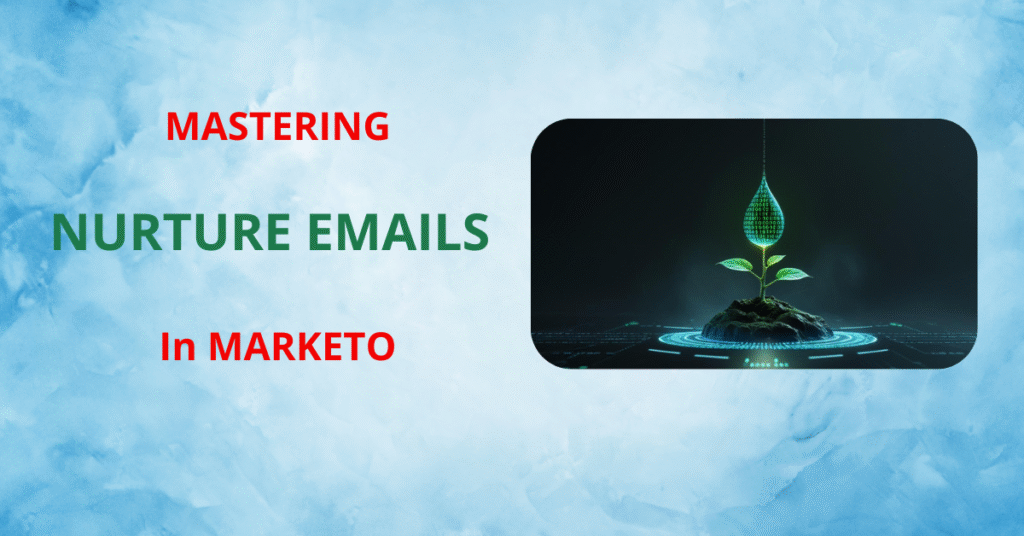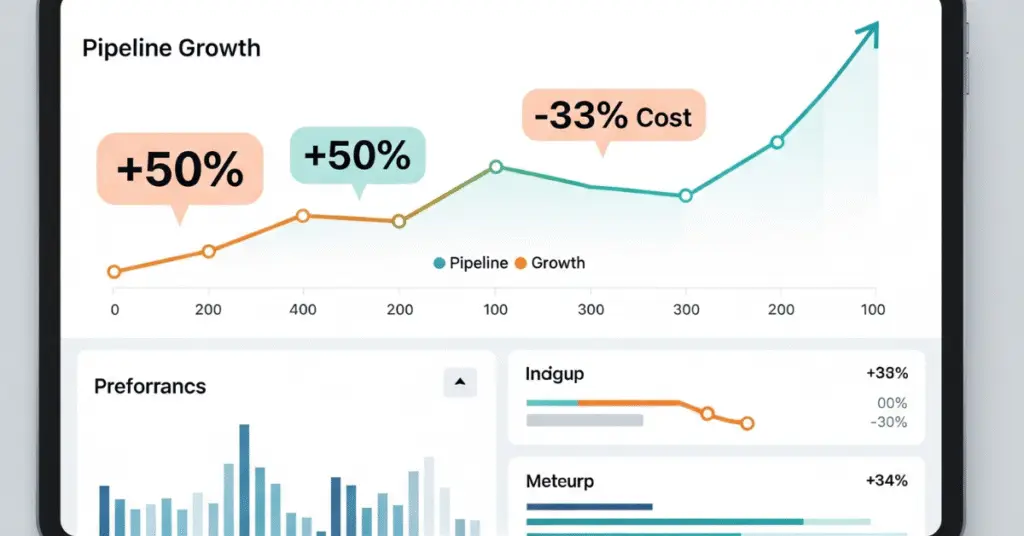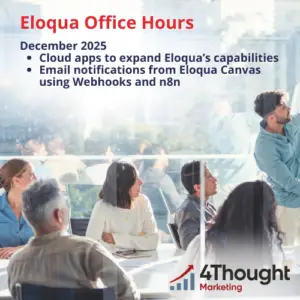
Nurture Emails are more than a series of messages; they’re the strategic conversations that guide a prospect from first contact to confident buyer. In marketing, capturing a new lead is like opening a door. But what happens once they’ve stepped inside? The path from a prospect’s initial curiosity to their confident purchase decision is a delicate journey that is rarely won with a single, loud promotional message.
This crucial, in-between space is where nurture emails thrive. They are a series of insightful conversations that build a lasting relationship, one message at a time. For savvy marketers, and especially for those leveraging the power of Adobe Marketo Engage, a sophisticated Marketo nurture program is the engine that transforms passive interest into active engagement and, ultimately, into loyal, high-value customers.
What Exactly Are Nurture Emails? A Deeper Dive
At its core, a nurture email sequence is a series of automated, interconnected communications designed to guide a prospect through the buyer’s journey. Think of it as a digital conversation that evolves. Unlike standalone email blasts that shout the same message to everyone, nurture emails listen first. They are sent in response to a lead’s behavior, interests, and demonstrated intent, delivering hyper-relevant information precisely when it matters most. The guiding philosophy is to educate, empower, and build trust before asking for the sale.
The Marketo Advantage
Marketo users have a distinct advantage here. This isn’t about sending one-off emails from a static list. This is about building a sophisticated Engagement Program with Marketo Smart Campaigns at its heart. Within Adobe Marketo Engage, you can design multi-stream nurtures that cater to different personas, product interests, or stages of awareness. By leveraging Marketo Smart Campaigns as the engine and triggers based on web activity (Munchkin tracking), score changes, and data value updates, your Marketo nurture programs become a living, breathing entity that responds to your leads in real time.
Why a Nurture Strategy is a Revenue Imperative
The impact of effective lead nurturing on the bottom line is undeniable. Forrester Research famously found that companies excelling at lead nurturing generate 50% more sales-ready leads at a 33% lower cost. But the “why” goes deeper than just numbers. A robust nurture strategy is a cornerstone of modern marketing because it allows you to:
- Build Authentic, Scalable Trust: Trust is the currency of modern business. Consistently providing value without an immediate ask demonstrates a genuine investment in your audience’s success. This approach fosters a sense of reciprocity and positions your brand as a credible, reliable partner long before a sales conversation begins.
- Educate and Shape the Narrative: Your prospects are looking for answers. Nurture emails allow you to become their most trusted source of information. By proactively addressing their pain points and educating them on potential solutions (including your own), you shape their understanding of the problem and subtly frame your solution as the ideal one.
- Maintain Meaningful Top-of-Mind Awareness: The average B2B sales cycle can be long and involve multiple decision-makers. A gentle, value-packed presence in their inbox ensures that when the time for a decision finally arrives, your brand isn’t just one of the options—it’s the obvious choice they’ve come to know and respect.
- Maximize Your Martech Investment: For Marketo users, nurturing through Marketo nurture programs and proper dynamic content email personalization is the key to unlocking the platform’s true ROI. You have the power to track behavior, score leads, and automate complex communication journeys. Failing to implement a sophisticated nurture strategy is like owning a sports car and never taking it out of first gear. It’s a massive waste of potential and investment.
“Companies that nurture leads effectively see 3× more pipelines and generate 50% more sales-ready leads at 33% lower cost.”
Types of High-Impact Nurture Campaigns for Marketo Users
Your nurture strategy can take many forms; each tailored to a different stage of the buyer’s journey or segment of your audience. Below are four of the most impactful campaign types, with practical guidance on how to bring them to life within Adobe Marketo Engage Programs and Marketo Smart Campaigns framework.

Welcome & Onboarding Series
Every new subscriber deserves a warm, informative introduction. Start with a sequence of three to five emails spaced two to three days apart, beginning with a heartfelt thank-you and a clear outline of what to expect next. Within Marketo, you can build this journey using a default Engagement Program: create separate streams for leads entering via a “Contact Us” form versus a “Content Download” form, then use program status changes to advance them through each email. Leverage operational emails for essential deliverables—like “Here’s your e-book”—so they bypass unsubscribes and always hit the inbox.
As each lead moves from “New” to “Onboarded,” use score thresholds in your Marketo Smart Campaigns to trigger a transition into your educational drip, ensuring your welcome series lays a solid foundation without leaving anyone behind.
Deep-Dive Educational Drip
Thought leadership isn’t built overnight. Design a multi-part drip that unpacks a complex topic—such as “Seven Pitfalls of Cloud Migration”—over four to six weeks. Tag each piece of content with an “interest” in your Marketo database (for example, “Cloud Migration – Part 1”). Then, build Smart Lists that automatically enroll leads who download or click on those assets into the appropriate drip stream. Within each email, include an “interesting moment” in Marketo to bump their lead score whenever they engage, signaling to Sales that this prospect is primed for a deeper conversation.
By the time they reach email four, you can surface a case study or invite them to a webinar—fully orchestrated by the behavior-based triggers in your re-engagement email campaigns and drip streams that respond in real time to their actions.
“Slowing Down” / Re-Engagement Campaign
Even the most enthusiastic prospects can go quiet. Identify anyone whose email opens or site visits have dipped over the past 60–90 days by building a Smart List filter on “Last Open Date” or “Last Web Activity.” Instead of letting these leads drift into oblivion, move them into a high-touch re-engagement email campaign: perhaps a series of three emails that combine a compelling new piece of content, a limited-time offer, and a friendly “We Miss You” message. Configure Marketo to automatically mark contacts as “Marketing Disqualified” if they remain inactive after the third email, keeping your database lean and your reports accurate.
By weaving in behavior-based triggers—say, if a lead clicks your offer link, they immediately exit the re-engagement program—you ensure you’re investing effort only where it counts.
Product-Focused & Upsell Flow
When a prospect lingers on a pricing page or explores specific product features, that’s your cue to deliver targeted messaging. Use a trigger campaign that watches for multiple visits to your “Enterprise Plan” page (or clicks on a “Learn More” button) and then enrolls that lead into a product-centric nurture stream. Over the next two weeks, send detailed use-case emails, customer success stories, and ROI calculators that speak directly to the prospect’s interests.
For existing customers, tap into your CRM data synced with Marketo to launch an upsell series—introducing them to complementary modules or premium support options the moment they reach certain usage or renewal milestones. With dynamic content email personalization blocks, each email can show different features or CTAs based on the recipient’s company size, industry, or prior purchase behavior, ensuring maximum relevance and conversion lift.
Crafting Your High-Impact Nurture Strategy in Marketo
Before you build any campaign, invest time in the strategic architecture: precise segmentation, content alignment, scalable personalization, and ongoing optimization. Here’s a four-step playbook for creating a world-class nurture engine inside Adobe Marketo Engage.

Segment Your Audience with Precision
Static lists won’t cut it when buyers expect tailored journeys. Instead, create dynamic Smart Lists that combine demographic filters (job title, region), firmographic criteria (company revenue, employee count), and behavioral triggers (email opens, web page visits, form fills). For example, build a “CMO in Finance” list by layering title = CMO + industry = Finance. As new leads meet those criteria, they’ll automatically drop into the appropriate Engagement Program stream—powered by Marketo Smart Campaigns—so every message they receive feels custom-built for their profile.
Map Your Content to the Journey
Random sends dilute impact. Audit your asset library and tag each piece by funnel stage: Awareness (e-guides, infographics), Consideration (whitepapers, webinars), Decision (case studies, demos). Then, within each Marketo stream, control cadence using lead score thresholds and engagement filters—so a lead who clicks three mid-funnel assets in seven days advances from the “Consideration” stream into “Decision,” triggering a demo invitation. Transition rules built into Marketo nurture programs ensure each prospect sees the next logical piece of content exactly when they’re ready for it.
Personalize at Scale
Beyond first-name tokens, personalization should make every email read like it was handcrafted. Leverage Snippets to swap in region-specific office addresses or industry-targeted boilerplate, and use dynamic content email personalization to show different images, headlines, or CTAs based on the lead’s segment. For instance, a manufacturing prospect might see a PDF download link, while a tech buyer gets invited to a live demo. Combining these features with your segmented Smart Lists means thousands of leads can receive highly customized sequences without adding manual upkeep.
Test, Measure, and Relentlessly Optimize
Your initial programs are just hypotheses. Use Marketo’s A/B testing not only on subject lines but also on email body variations—test short versus long form, different imagery, or alternate CTAs—to uncover what resonates. Monitor Engagement Program Performance Reports to pinpoint drop-off emails or low-performing streams. When a particular step underperforms (say, a 10% click rate instead of the target 20%), pull that email into a separate Smart Campaign, iterate on the content, and relaunch—continuously tightening each touchpoint until your nurture engine hums at peak efficiency.
By weaving segmentation, content alignment, personalization, and rigorous testing into your Marketo nurture programs, you transform isolated sends into a cohesive, data-driven journey that guides every lead smoothly from curiosity to commitment.
Conclusion: From Owning Marketo to Mastering It
Every marketer with a lead database wants the same thing: to convert those hard-won names into devoted, revenue-generating customers. And when you correctly leverage a powerful platform like Adobe Marketo Engage, you have the tools to create a sophisticated, automated engine that makes this possible at scale. But simply owning the platform is not the same as mastering it.
Many organizations get stuck in the technical weeds, using Marketo for simple email blasts while its most powerful lead nurturing and revenue-driving capabilities gather dust. Which is precisely why developing a strategic, customer-centric approach to nurture emails is the single most important step you can take to unlock the true potential of your marketing efforts and maximize your investment in the Marketo nurture programs.





